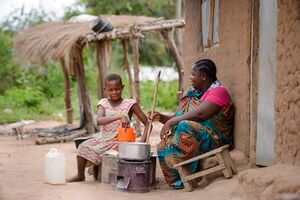Difference between revisions of "Sandbox"
***** (***** | *****) m Tag: 2017 source edit |
***** (***** | *****) m Tag: 2017 source edit |
||
| Line 18: | Line 18: | ||
</div> | </div> | ||
__NOTOC__ | __NOTOC__ | ||
| + | |||
{{ESDS Tabs}} | {{ESDS Tabs}} | ||
| + | |||
<div class="grid"> | <div class="grid"> | ||
<div class="width-3-4"> | <div class="width-3-4"> | ||
Revision as of 14:21, 4 March 2022
Background Information ESDS
Energy Solutions for Displacement Settings (ESDS) is one of four project components of the BMZ commissioned Global Programme “Support to UNHCR in the implementation of the Global Compact on Refugees (GCR) in the Humanitarian-Development-Peace Nexus” (SUN) which assists UNHCR and other stakeholders in operationalizing the GCR in selected displacement contexts. ESDS focuses on the sustainable energy sector and seeks to remedy the lack of sustainable energy supply in order to enhance the self-reliance of communities in Ethiopia, Kenya and Uganda. Read more
The BMZ commisioned Global Programme "Support to UNHCR in the implementation of the Global Compact on Refugees in the Humanitarian-Development-Peace Nexus”(SUN), implemented by GIZ, seeks to support UNHCR in its role as facilitator of the implementation of the Global Compact on Refugees (GCR) and the Comprehensive Refugee Response Framework (CRRF) in selected refugee contexts and sectors. The Global Programme is part of the German Special Initiative Tackling the Root Causes of Displacement, (Re-)integrating Refugees The Global Programme also aims to operationalise the Humanitarian-Development-Peace (HDP) Nexus. The HDP Nexus envisions actors working in humanitarian, development and peace realms to work more cohesively together, capitalizing on their respective comparative advantages following the recommendations of the 2016 World Humanitarian Summit (WHS) and in line with the 2030 Agenda. Under the “New Way of Working” agreed at the WHS, the various actors are expected to work towards “collective outcomes” that reduce risk and vulnerability and serve as instalments towards the achievement of the SDGs.
Background Information ESDS
Lore ipsum ...
Contact Persons
- General: Corinna Toelzer
- Market-Based Energy Access: Nishchay Mehrotra
- Electrification: Lucas Kuerten
- UNHCR Infrastructure Solarisation: Alessandra Knappertsbusch
- Energy Policy: Nishchay Mehrotra
- E-Waste/Gender: Lucas Kuerten
- Uganda: Bettina Bäsch Ssemwaka
- Ethiopia: Elias Getachew
- Kenya: Valerie Ostheimer
Internal Guide
You can find information about how to create/link project related information on the ESDS page here.Latest Articles
- Promoting Productive Use of Electricity in Displacement settings.pdf
- Promoting Productive Use of Electricity in Displacement settings

Regional Focus
ESDS Webinars
- Ewaste Value Chain in Humanitarian Settings
- Role of Energy Policies in Shaping Energy Access Dialogue in Displacement Contexts
- Access to Energy for Cooking in Displacement Settings
- Energy Efficiency in Humanitarian Organization Infrastructure
- Workshop on Participatory Design Processes for Energy Projects Planning and Implementation




















